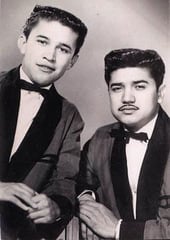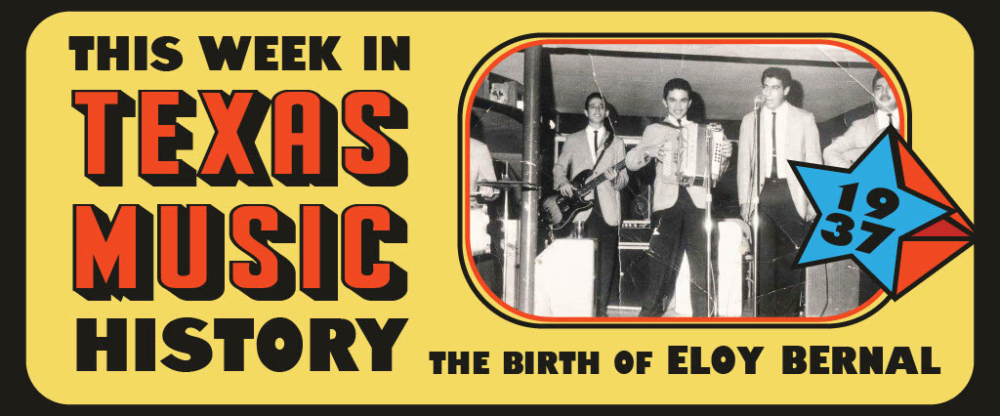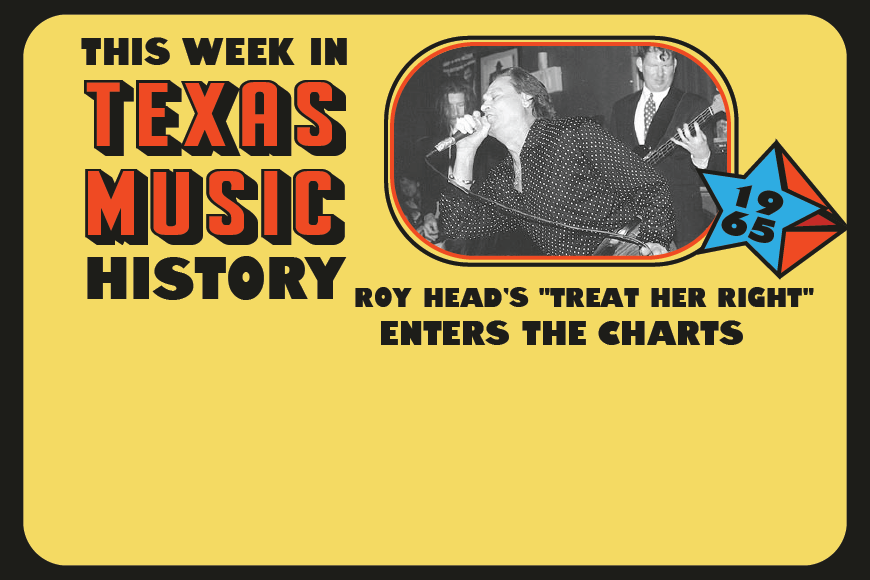This Week in Texas Music History we meet the bajo sexto player who served as one of conjunto’s major innovators.
On March 11, 1937, conjunto musician Eloy Bernal was born in a South Texas farming community. Influenced by conjunto pioneers like Valerio Longoria and Narciso Martinez, Eloy took up the bajo sexto while his younger brother Paulino adopted the accordion. The two formed a duo as teenagers, and by 1954 were turning heads in Kingsville with their experimental take on the conjunto sound. Paulino mixed in flashy accordion solos and curious phrasing, and Eloy’s arrangements edged toward complex vocal harmonies that would become a genre standard. In 1955, as El Conjunto Bernal, Eloy and Paulino cut their first track with Armando Marroquin’s Ideal Records in Alice. The brothers often served as the backing band for other Ideal vocalists such as Carmen y Laura.

Eloy Bernal (right)

Journalist Ramiro Burr also credits El Conjunto Bernal with taking the folksy genre of conjunto and jazzing it up with their dual accordion attack, matching stage outfits, and even experiments in rock ‘n’ roll. Paulino left the group at its height in the 1960s and resurfaced in the next decade as a leading artist in Spanish-language gospel. Eloy took El Conjunto Bernal forward with vocalists Ruben Perez, Cha Cha Jimenez, and Laura Canales, mentoring new generations of artists in the field and performing into the late 1990s. The Texas Conjunto Music Hall of Fame and Museum in San Benito inducted Eloy Bernal posthumously in 2009.
Sources:
Ramiro Burr. The Billboard Guide to Tejano and Regional Mexican Music. New York: Billboard Books, 1999.
Gary Hartman in Laurie E. Jasinski, Gary Hartman, Casey Monahan, and Ann T. Smith, eds. The Handbook of Texas Music. Second Edition. Denton, TX: Texas State Historical Association, 2012.
Manuel Peña. Música Tejana: The Cultural Economy of Artistic Transformation. College Station: Texas A & M University Press, 1999.




